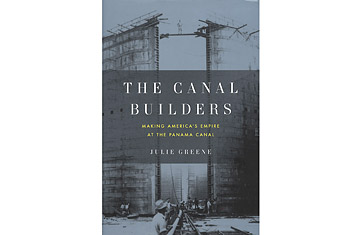
The Canal Builders:
Making America's Empire at the Panama Canal
By Julie Greene
475 pages; The Penguin Press
The Gist:
It still stands as one of the 20th Century's greatest feats of engineering: over a decade, vast battalions of workers braved illness and misadventure to carve a 50-mile long channel through the Panamanian isthmus to connect the Atlantic and Pacific oceans. But for University of Maryland history professor Julie Greene, the project was about more than miles dug or dirt shifted. "We have long perceived the canal as involving conquest over nature, and there's some truth in that. But it also involved conquest over the tens of thousands of men and women in the Canal Zone and in the Republic of Panama." And so Greene focuses her account of the Panama Canal's construction on the eponymous canal builders — those many peoples who came from the Americas and the Caribbean and Europe in order to work on the young century's greatest project. (Read "Is Panama the Americas' Hong Kong?")
Highlight Reel:
1. On the great diversity of peoples who worked on the Canal: "Although most [non white-American] employees came from the Caribbean, many traveled to the Canal Zone from southern Europe, from India and from other parts of Latin America. The 1912 census included as employees of the [Isthmian Canal Commission] or the Panama Railroad one thousand Panamanians, eight hundred Italians, thirteen hundred Greeks, thirty-five hundred Spaniards, and smaller numbers of East Indians, Portuguese, Ecuadorians, Peruvians, Venezuelans, Colombians, Mexicans, Hondurans, Costa Ricans and Nicaraguans."
2. On one of the more unique perks of working on the canal: "The ultimate souvenir, however, was a shark tooth. Occasionally canal workers would find one in the dirt dislodged by dynamite, a souvenir from millions of years past when the two oceans were still connected. Such a lucky canal worker would then mount the tooth and wear it proudly on a black watch fob. Reginald Beckford, who worked for a time in a jeweler's shop, remembered mounting many shark teeth for West Indian clients."
3. On the ease with which men died in the Canal Zone: "Dynamite explosions, landslides, steam shovels toppling over, cranes swinging quickly by and crushing heads as they went, railroad accidents, falls from scaffolding while building the enormous locks and gates, and all the various diseases generated significant anxiety. A man named Albert Banister worked in the boiler room at Cristobal and related how casually death appeared in conversations: 'Man died get blow up get kill or get drown during the time someone would asked where is Brown he died last night and burry where is Jerry he dead a little before dinner and buried so on and so on all the time.'"
The Lowdown:
Building the Panama Canal involved more than the moving of great steam-powered digging machines. The most difficult task was quickly establishing what amounted to a brand new nation. Cities had to be built, diseases had to be eradicated, and thousands upon thousands of workers had to be shipped in, and housed, and fed, and entertained, and jailed, and cared for, and buried when that caring for failed. Greene sees the Canal Zone as a melting pot whose constituent pieces never quite came together; her book explores the racial and economic conflicts that arose as a result. It's a purposefully different sort of history — those looking for a straightforward account of the Canal's construction should search elsewhere — and one that would benefit from a less academic tone. Dutiful in its delivery, The Canal Builders secures a largely anonymous group of people their place in history.
The Verdict: Skim
